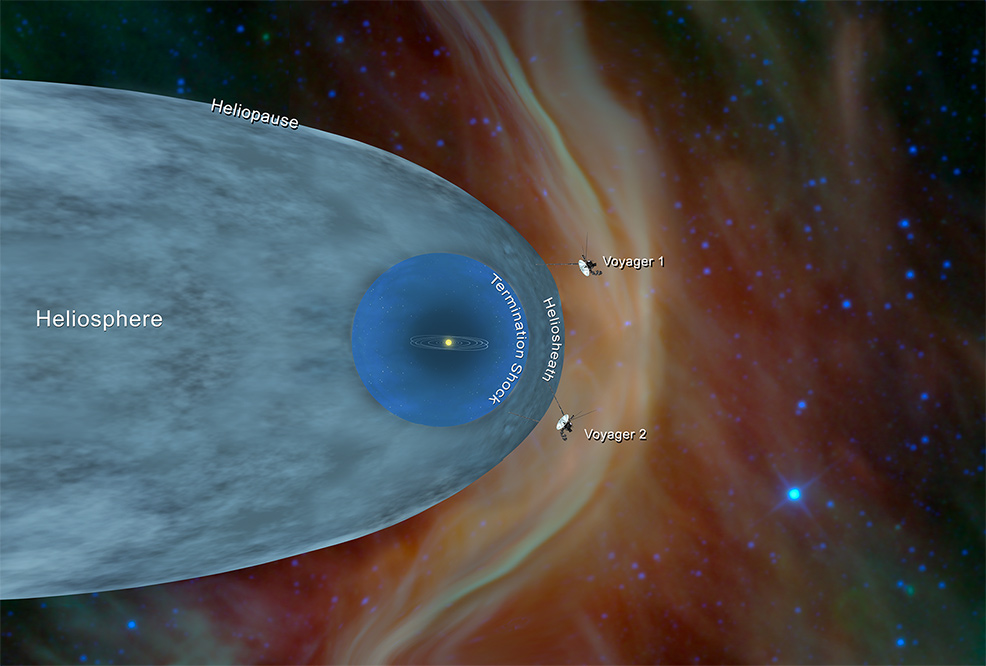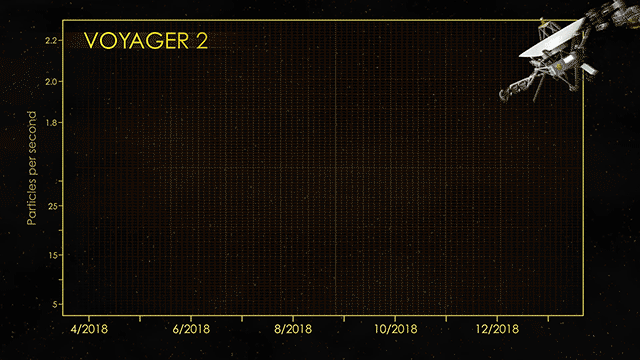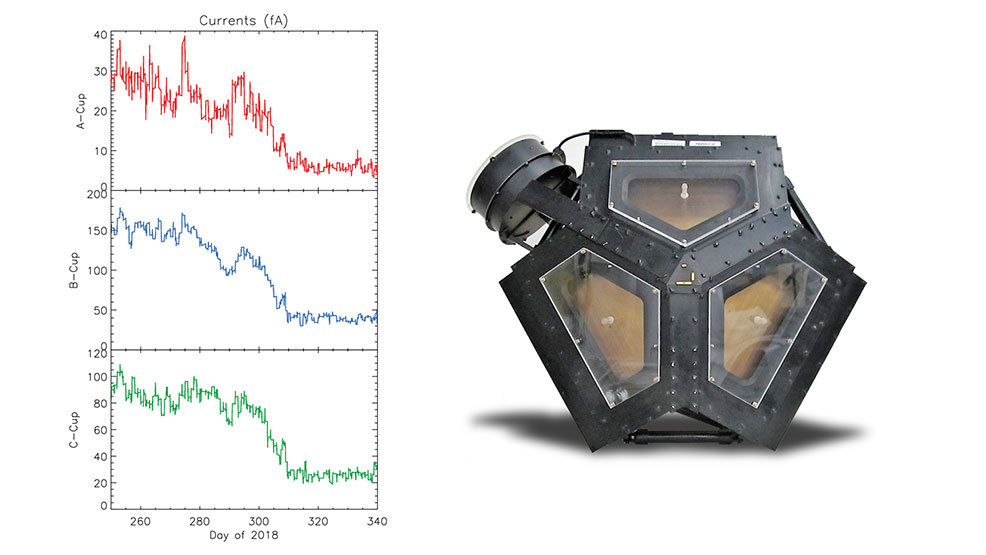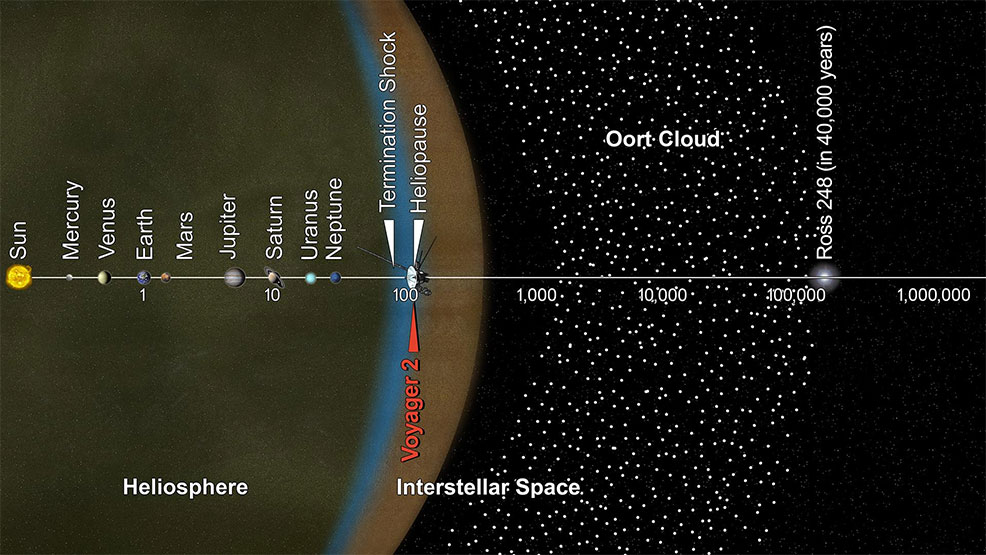
14th December 2018 Voyager 2 has left the Solar System The Voyager 2 space probe – launched in August 1977 – is now confirmed to have left the Solar System for interstellar space, six years after its sister probe, Voyager 1.
For only the second time in history, a human-made object has reached the space between the stars. After passing through the termination shock and into the heliosheath in October 2007, NASA's Voyager 2 probe has now exited the heliosphere – the protective bubble of particles and magnetic fields created by the Sun. Comparing data from different instruments aboard the trailblazing spacecraft, mission scientists determined the probe crossed the outer edge of the heliosphere on 5th November. This boundary – called the heliopause – is where the tenuous, hot solar wind meets the cold, dense interstellar medium. Voyager 1 crossed this boundary in 2012, but Voyager 2 carries a working instrument providing first-of-its-kind observations about the nature of this gateway to interstellar space. Voyager 2 now is slightly more than 11 billion miles (17.8 billion km) from Earth. Even now, mission operators can still communicate with the probe as it enters this new phase of its journey, but the data – moving at the speed of light – takes 16.5 hours to travel to and from Earth. By comparison, light from the Sun takes about eight minutes to reach Earth. The most compelling evidence of Voyager 2's exit from the heliosphere came from its onboard Plasma Science Experiment (PLS), an instrument that stopped working on Voyager 1 in 1980, long before that probe crossed the heliopause. Until recently, the space surrounding Voyager 2 was filled predominantly with plasma flowing out from our Sun. This outflow, called the solar wind, creates a bubble – the heliosphere – that envelopes the planets in our solar system. The PLS uses the electrical current of the plasma to detect the speed, density, temperature, pressure and flux of the solar wind. The PLS aboard Voyager 2 observed a steep decline in the speed of the solar wind particles on 5th November. Since that date, the plasma instrument has observed no solar wind flow in the environment around Voyager 2, making scientists confident the probe has left the heliosphere.
In addition to the plasma data, the NASA scientists have seen evidence from three other onboard instruments – the cosmic ray subsystem, the low energy charged particle instrument and the magnetometer – that is consistent with the conclusion that Voyager 2 has crossed the heliopause. Voyager's team members are eager to continue studying the data from these instruments to get a clearer picture of the environment through which Voyager 2 is moving.
“There is still a lot to learn about the region of interstellar space immediately beyond the heliopause,” said Ed Stone, Voyager project scientist based at Caltech in Pasadena, California. Together, the two Voyager probes can provide a detailed glimpse of how our heliosphere interacts with the interstellar wind flowing from beyond. They will complement data from NASA’s Interstellar Boundary Explorer (IBEX), which is remotely sensing that region. NASA is also preparing an additional mission – Interstellar Mapping and Acceleration Probe (IMAP), due for launch in 2024. “Voyager has a very special place for us in our heliophysics fleet,” said Nicola Fox, director of the Heliophysics Division at NASA Headquarters. “Our studies start at the Sun and extend out to everything the solar wind touches. To have the Voyagers sending back information about the edge of the Sun’s influence gives us an unprecedented glimpse of truly uncharted territory.” The Voyager probes are powered using heat from the decay of radioactive material, contained in a device called a radioisotope thermal generator (RTG). The power output of the RTGs diminishes by about four watts per year, which means that various instruments, including the cameras on both spacecraft, have been turned off over time to manage power. The probes are therefore expected to remain operational until 2025–2028. Looking further ahead, it will take about 300 years for Voyager 2 to reach the inner Oort Cloud and 30,000 years to fly beyond it. The probe will pass close to the bright A-type star, Sirius, in around 298,000 AD. Each of the Voyager spacecraft carries a Golden Record of Earth sounds, pictures and messages. Since the spacecraft may last billions of years, these circular time capsules could one day be the only traces of human civilisation.
Comments »
If you enjoyed this article, please consider sharing it:
|










